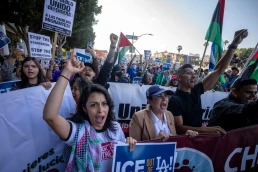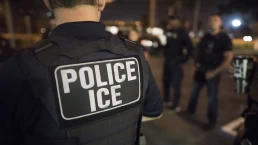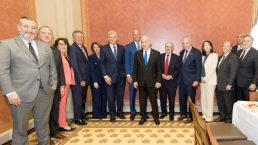The operations of Priorities USA highlights a glaring loophole with current rules regulating nonprofits.
by Walker Bragman, Important Context
A public charity associated with one of the nation’s largest Democratic outside spending operations has been raking in millions of dollars and passing money on to one of the organization’s political arms, federal tax records reveal.
For years, the Priorities USA Foundation, a tax-exempt 501(c)(3) charity, has been funneling money to an affiliated 501(c)(4) “social welfare” group, Priorities USA. Both nonprofits fall under the same organizational umbrella as Priorities USA Action, one of the largest and most powerful Democratic super PACs in the country. Founded in 2011 by two former aides to Barack Obama, the group is so big, it “has no peer,” according to the New York Times. In the 2020 presidential race, it spent the third highest amount among all outside spending groups.

Since 2018, the Priorities USA Foundation has provided an amount of money roughly equal to 70 percent of what it received in contributions and grants over that period to its social welfare affiliate. The percentage has been trending higher in recent years. In 2022, for example, it moved roughly $10 million—equal to nearly 96 percent of what it raised in contributions and grants for the year—to its 501(c)(4) arm, roughly a third of what the social welfare group raised that year. The contribution was marked in its tax filing for “voter access litigation and digital communications,” two areas the social welfare group has been focused on.
According to the Priorities USA social welfare group’s Internal Revenue Service Form 990 filing for 2022, the group raised $27 million in contributions and grants and the overwhelming majority of its spending—nearly $26 million—went to “mobiliz[ing] Americans on the issues that impact their lives through…long-term research, digital, and communications programs.” The group specified that it “conducted research on how best to reach people most impacted by policy decisions, and ran innovative digital ad programs.” The filing reveals that $20 million went specifically to “advertising and promotion.” Another $4 million was spent for ballot access litigation.
Recent Posts
What To Do When You See ICE In Your Neighborhood
July 14, 2025
Take Action Now How can you deter the Trump administration’s immigrant deportation machine when it pops up in your community? Follow these…
ICE Campaign Of Violence Will Lead To More Deaths
July 14, 2025
Take Action Now Jaime Alanis’s death shows the horrific consequences of a secret police force behaving with utter impunity.By Natasha Lennard, The…
Hague Group: “Concrete Measures” or Sack of Cement? Will It Move to Sanctions, Peace Force and Ensuring Aid to Gaza?
July 13, 2025
Take Action Now Will the meeting in Colombia be a coalescence of global opinion driving states to just action — or just more rhetoric from various…
Why Are Democratic Lawmakers Still Meeting With Netanyahu?
July 12, 2025
Take Action Now Pictures show Democrats like Chuck Schumer standing next to Netanyahu, smiling.By Sharon Zhang, Truthout A bipartisan group of…




